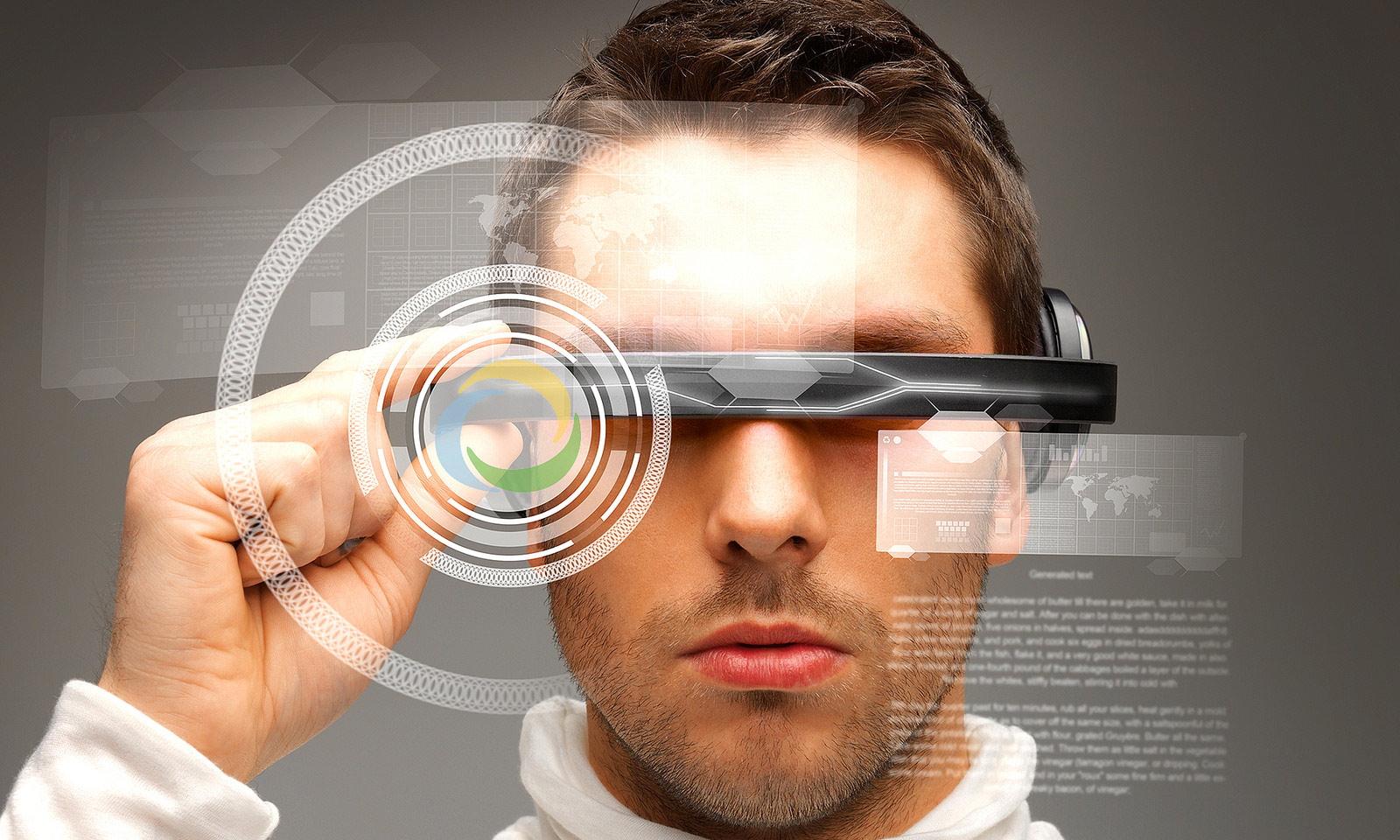
In the not-too-distant future, this is what news may look like.
Jan is in her self-driving car, on the way to a meeting in a city nearby, when a severe thunderstorm hits her hometown, spawning a small tornado. Jan’s smartwatch issues a storm warning, then alerts her that her daughter’s school is in lockdown. The smartwatch asks Jan if she wants more details. “Yes, neighborhood news,” Jan replies. “Car display.” The news stream switches from her smartwatch to the dashboard screen. Real-time posts from her neighborhood appear with details of damage and with photos. Jan’s house sends a message that the power is out. A request for a map of her town shows the path and real-time location of the tornado. It also shows which neighborhoods have power and which schools are locked down. Road closures and traffic jams appear as red lines.
Jan waves her hand to clear the screen. “Call Peter,” she orders. Within seconds, her husband appears on the screen. As they talk, a stream of news updates scrolls across the bottom of the screen. Jan orders the car to “change destination to home,” and it navigates a course based on road closures and traffic conditions. A scheduler app sends a message to cancel the meeting. On the ride home, Jan receives a steady stream of live updates on emergency shelters, injury lists from local hospitals and damage reports from local police.
Amid all the excitement, Jan’s smartwatch detects an alarming rise in her blood pressure and cautions her to relax and breathe deeply. The car’s interior lighting adjusts to a soothing color, and the windows tint slightly. By the time Jan arrives at home, she is relaxed and informed, aware of everything she needs to know about the storm’s impact.
Is this “news” in the traditional sense? No. Is it a bit unsettling? Yes. But this futuristic system delivers real-time information at a critical moment. Jan can also learn about social and political unrest in a region of China where her company has a factory, stock quotes of her key holdings, and an update on the local team’s playoff chances. She can also get details and coupons for a sale on batteries at Sears.
Most of that information is also of interest to people who work with her, live near her, or share her interests. But it is the data-driven filtering and timely delivery of the content that will define the next generation of news providers.
A Brave New World
Far fetched? Not really, because all of the technology required for Jan’s hypothetical world already exists. The missing piece is merely the glue that will hold them all together, and it is close to becoming reality: the semantic web.
In his book “Weaving the Web,” Tim Berners-Lee described the semantic web.
“I have a dream for the Web [in which computers] become capable of analyzing all the data on the Web — the content, links, and transactions between people and computers. A ‘Semantic Web,’ which makes this possible, has yet to emerge, but when it does, the day-to-day mechanisms of trade, bureaucracy and our daily lives will be handled by machines talking to machines. The ‘intelligent agents’ people have touted for ages will finally materialize.[12]”
The question is, will the provider of that customized information be a media company or a technology company? A new wave of change is sweeping the media landscape, and news organizations will need to make radical changes if they want to survive this tsunami of media transformation.
In the early years of the transition from mass media to digital media, traditional news organizations held tightly to their model of a firewall between content and advertising. But technology companies such as Google and Facebook built new business models that specifically tied content to advertising. They took over the role of matchmaker between advertisers and customers, stealing a huge percentage of the revenue news organizations had depended on for years.
Since the invention of the printing press, the “news media” have grown in a consistent pattern: more, bigger and faster. From print media to broadcasting, to hypermedia to today’s overwhelming omnimedia, each new generation of technology allows for a larger, growing audience that is reached more quickly through an ever-expanding range of formats and devices.
The Four Horseman of the Techpocalypse
Now four new technology advances are poised to fundamentally change the nature of information distribution: The Internet of Things (IoT), location tracking, wearable computers and the semantic web. All four are already being implemented in a variety of commercial and governmental applications. When they merge and become part of the communications system, they are going to bring profound changes to our daily lives and to the very nature of news.
The Internet of Things is a network of connected devices from home thermostats and fitness trackers to smart roads that combine sensors and transmitters. The missing ingredient right now is that there is no way to connect them all. But GE has already developed a system to allow a wide range of devices to communicate, and GE estimates it will make $1 billion on its Predix IoT system this year.
Location tracking is already an integral part of smartphones and mobile apps. WeChat, the fastest growing social media company in the world, offers real-time tracking of connected phones. Facebook recently announced a program for location-targeted ads.
Of course wearables are the next big thing, with smartwatches from Samsung leading the way with Apple watches coming soon.
What Now?
So where does this leave news organizations and media companies that are already struggling with the dominance of tech titans such as Google, Apple and Facebook?
While technology companies have made huge strides in their effort to deliver targeted, customized ads meeting the interests of specific individuals, news/media companies must stop thinking of themselves as just content providers and fundamentally change their focus to become platforms providing critical services, as well as information.
Jeff Jarvis, a professor at CUNY Graduate School of Journalism and author of the Buzzmachine blog, has written extensively on journalism as a service. His main point is that journalists define themselves as content makers, not service providers, and that needs to change. He’s absolutely right.
What will all of this mean for journalists?
Looking ahead five years, the progression for news media of more, bigger, faster is going to change to less, customized, and as needed. Social sharing will become the main driver of news content. To be successful, the next generation of news/media companies must deliver critical or entertaining information customized for a specific person based on their location, job, relationship status, interests, contacts and eventually, even their mood. I call this next phase micromedia. It would contain all of the elements of traditional news — world events, politics, sports, weather, fashion and sports — but would use big data analytics, social media semantic analysis, location tracking software and IoT sensor data streams, so the content would be filtered and timed to meet the individual’s needs.
To gain the kind of personal information required to do that, news organizations must transform themselves. Their competition is not other news media, but Google, Facebook and Apple. They must either offer a new kind of platform that provides a service so useful that the public willingly shares their information (as they do with Facebook or Pinterest), or team up with an existing platform that already has a loyal user base.
App developers are already doing this. If media companies don’t start focusing on the individual rather than the mass, they will soon become part of the marketing department at Google. As Jarvis says, “No mas mass media.“ Some progressive news organizations are already experimenting with this approach, with NPR One leading the way.
Mass Media versus Micromedia
Newspapers and broadcasters built their empires on the concept that they could offer something for everyone, package it along with ads, and sell it to the public. But Yankee fans probably don’t want to follow the play-by-play of a Capitals hockey game. And while there is no doubt that the Ebola crisis in Africa is an important story, that content is available in many places, and most people are not likely to pay for it. An outbreak of whooping cough at their daughter’s school has more immediate importance to them.
As the amount of data about our every move increases, technology companies will gain priceless information about us, which they will use to drive advertising. For news organizations to survive and thrive in the future, they will need to provide services that allow citizens to share their personal data.
All of this data needs to be collected by a trusted “system” that can protect and share the information as needed. Google, Facebook and Apple, among others, are trying to become that system. As profit-driven corporate behemoths, they face some skepticism from ordinary people. A credible, nonprofit news organization that has developed a next-generation platform that allows users to access and share critical information could emerge as a very successful provider. They would be providing a real service and collecting our data at the same time. This is both exciting and scary.
A Dance With The Devil
In order to survive, news organizations should start hiring programmers and developers, and partner with other media organizations, to create sufficient technical staff to gain critical mass. Many digital-born media outlets like BuzzFeed are extremely data driven. They use that data to determine the most effective headlines and placement to maximize the sharing ratio for their stories. For years, consumers have been subscribing to RSS feeds of specific topics they care about. But the data is spread across dozens of websites and companies. Once again, this is where the semantic web could provide a data collective where that information is collated and analyzed.
Traditional news teams must also adapt to the new world. The success of digital-first companies like Vice and BuzzFeed is based on providing clients with native advertising or sponsored content. If news teams continue to look at this as a violation of the great church/state separation of powers, then they are missing an opportunity. Why is this important? Because it puts the media company back in the position of being the intermediary between the seller and the buyer. And if they are also providing a real service to their users, they will have information about how to target that sponsored content, which is very valuable.
Journalists must also give up their medium-centric identity. Print, television, radio and the web will soon become irrelevant distinctions. News organizations must take each story and produce “responsive content,” meaning the story appears in the best possible format based on the user’s situation — short, text-based headlines for smartwatches, and high-quality 4K video for large screens at home. Audio-only for mobile devices and cars, and high-quality print versions for longer reads and evergreen content. Like responsive web design, it has to be totally focused on the user experience, not the identity of the content producer.
So, micromedia may be a dance with the devil. It means media companies must engage in the same kind of information collection and data mining that retailers and technology companies have been doing for years. If Target can predict if a woman is pregnant and sends her coupons for baby-related merchandise, then news organizations should be able to send her important medical information about prenatal care. Target believes that if it can hook her on buying diapers at Target, she will do all of her shopping there. A news organization’s effective use of micromedia would mean that she, or Jan, might do all her information shopping there.
But it is vitally important that the value of the service provided, and the integrity of the information collected, be overwhelmingly beneficial to Jan. It must be an authentic attempt to provide a service that will help her —much the same way a text alert warns of a traffic jam, an Amber Alert announces a missing child or the emergency broadcasting system notifies her of an approaching tornado.
Paul Sparrow is a senior vice president at the Newseum. He was an Emmy Award-winning broadcast journalist and executive producer before joining the Newseum in 1999.







Leave a Comment